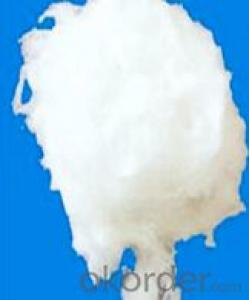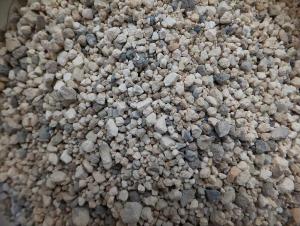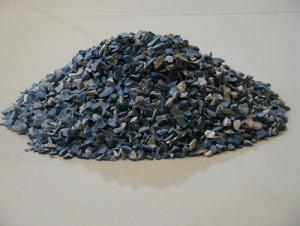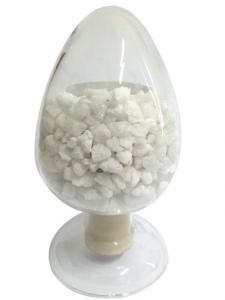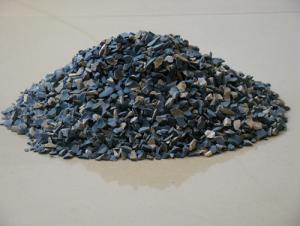Ceramic Fiber For High Temperature Furnace
- Loading Port:
- China Main Port
- Payment Terms:
- TT OR LC
- Min Order Qty:
- -
- Supply Capability:
- -
OKorder Service Pledge
OKorder Financial Service
You Might Also Like
Specifications
1.Low thermal conductivity.
2.Classification temperatures:1100,1260,1360,1430.
3.Excellent thermal insulation property.
High Quality Ceramic Fiber Cotton For Thermal Insulation
Specifications
Low thermal conductivity low thermal capacity Good chemical stability Good thermal stability
Technical characteristics
1. Low thermal conductivity, low thermal capacity
2. Good chemical stability
3. Good thermal stability, high temperature not pulverization
4. Without binders and corrosive substances
5. Good sound-absorbing performance
Application
1. Raw materials of fiber blanket and plate products
2. Raw material of fiber textile
3. High-temperature furnace, heating device and wall lining crack stuffings
4. Raw materials of wet method products
5. Raw materials of fiber spraying and castable material
6. Insulation stuffings in the corner and complex space
Item | JY-1000 | JY-1260 | JY-1400 | JY-1600 | ||
Specification Tem.(°C) | 1000 | 1260 | 1400 | 1600 | ||
Working Tem. (°C) | 900 | 1100 | 1200 | 1200 | ||
Color | White | White | White | White | ||
Fiber Dia.(um) | Blowing | 2-3 | 2-3 | 2-3 | 2-3 | |
Spinning | 3-4.5 | 3-4.5 | 3-4.0 | 3-4.0 | ||
Chemical Composition(%) | Al2O3 | 42-44 | 47-49 | 52-55 | 45-46 | |
Al2O3+ SiO2 | 96 | 99 | 99 | -- | ||
Al2O3+ SiO2+ZrO2 | -- | -- | -- | 99 | ||
ZrO2 | -- | -- | -- | 5-7 | ||
Fe2O2 | <1.2 | 0.2 | 0.2 | 0.2 | ||
Na2O +K2O | ≤0.5 | 0.2 | 0.2 | 0.2 | ||
Package :5kg/bag;10kg/bag;15kg/bag;20kg/bag, others made according to customers’ requirements.
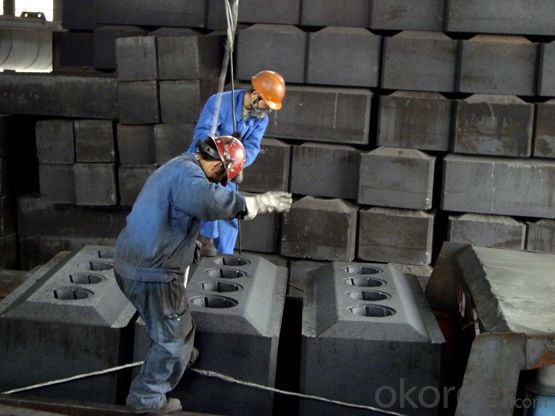
- Q:Is the ball mill used in production of refractories?
- It will be used. It is used in the process of milling the raw material which is less demanding on technology and in relatively large amount. Is there lots of network marketing for refractory industry? Is the competition fierce on the Internet?
- Q:What is unshaped refractory?
- Plastic. From the production method, the plastic is between the concrete and the castable. It is made of refractory material by refractory material plant, which is made of plastic clay. The ingredient is a retarder. It is packaged by plastic bag, and construction and heat treatment are carried out on the spot. But the biggest problem is the application of plastic on the knotted Jiecha easy peeling, retarder dosage improper or is vulnerable to bad caking plastic hardening.
- Q:What refractory material does cupola lining use?
- In order to improve the service life of the lower wall and the bottom leather, dense and high alumina brick can be used for masonry. The front furnace is composed of the bottom, the wall and the top. The top of the furnace is vaulted or hanging flat roof. The front furnace body is usually made of clay brick and high alumina brick, and the bottom work floor is rammed with ramming material. The material is the same as that of cupola furnace. The bridge and the front guard taphole, slag hole and other parts due to erosion by high temperature molten iron and slag erosion, lower service life, frequent repairs. Large blast furnace adopts hot blast or oxygen enriched blast, which has higher temperature and higher production capacity... The damage is faster, and it is hard to maintain production by using clay brick or high alumina brick. Should be used aluminum, carbon or corundum refractory silicon carbide castables pouring or tamping, so that the integrity of good, high strength, corrosion resistance, and therefore significantly improved service life, generally up to one year or so. Refractory materials, including chimneys and spark traps, are used in other parts of the cupola. The chimney and the cupola shaft directly connected with the shell made of steel plate, lined with ordinary clay brick, can also be used ordinary refractory castable pouring. The chimney is provided with a furnace heat exchanger, which can preheat the air to 300~500 DEG C, and the spark collector is used for catching the hot coke and dust particles brought out in the flue gas. The chimney at the top of the reflector (cover) by plate welding, can also be used to cast iron, its lining refractory coating or spraying paint.
- Q:What's the frequently used refractory material?
- Refractory material is generally used in industrial departments like metallurgy, glass, cement, ceramics, machinery, hot working, petrochemical industry, power and national defense. Frequently used common refractory: silica?brick, semi-silica brick, clay brick, high alumina brick, magnesia brick, etc. Frequently used special refractory: AZS brick, corundum brick, direct-bonded?magnesia-chrome?bricks, carborundum brick, calcium oxide, chromium hemitrioxide, alumina, magnesium oxide, etc. Frequently used fireclay insulating refractory: diatomite product, asbestos product, insulation?board, etc. Frequently used unshaped refractory: ramming refractory, refractory castable, plastic refractory, refractory mortar, gun-mix refractory, refractory coating, lightweight refractory?castables, etc.
- Q:What high-molecular polymers can be used as fire-resistant material binder?
- Melamine resin should be compounded with fire-resistant material and acrylic acid material is easy to burn. But high-molecular polymers can be used along with the above two. Polysulfone is featured by heat resistance and high temperature resistance. Polyurethane is difficult to process and compound with fire-resistant material. Phenolic resin is not easy to burn. Epoxy is expensive and self-extinguishing once away from fire.
- Q:I wanna ask that magnesium oxide is refractory?
- Magnesium oxide is used in refractory material, because it has the following characteristics and properties: 1, high stability: Anti-oxidation, anti-reduction, thermal decomposition; 2, high melting point, 2800 degrees; 3, low prices. In particular, the stability and melting point is very good, I hope I can give you help.
- Q:What does refractory mean?
- Basic refractory material generally refers to Magnesium Oxide or Magnesium Oxide and calcium oxide as the main component of refractory materials. This kind of refractory material has higher refractoriness and strong resistance to alkaline slag.
- Q:What is fire retardant coating mainly used for?
- The functions of refractory coating are as follows: 1. Non-intumescent fire retardant coating is mainly used for the fireproofing of wood, fiber board and other materials, and it is used in the surfaces of wood truss, roof, doors, windows and etc. Second, the intumescent fire retardant coating can be divided into non-toxic intumescent fire retardant coating, expansible fire retardant coating emulsions, solvent-based fire retardant coating. 3. Non-toxic intumescent fire retardant coating can be used to protect cables, polyethylene pipes and insulation board. 4, The expansible fire retardant coating emulsion and solvent-based fire retardant coating can be used for fireproofing of buildings, electricity power, and cables. 5. New fire retardant coating: Transparent fire retardant coating, water-soluble intumescent fire retardant coating, fireproof emulsion paint, polyvinyl acetate emulsion fire retardant paint, water-soluble intumescent fire retardant paint drying at room temperature, fire insulation coating polyolefin fire retardant coating, modified high chloropolyethylene fire retardant paint, chlorinated rubber fire retardant coating, firewall coating, intumescent coatings, wire and cable fire retardant paint, new fire retardant coating, casting fire retardant coating and so on.
- Q:What kinds of refractory will be used in kiln of sintering ceramics?
- Porcelain has many classes, including acid, alkaline and neutral materials.
- Q:What are the requirements of refractory temperature of refractory brick?
- Oxygen fluctuation of load once happened during operation. Sometimes oxygen control valve will cause oxygen fluctuation of load, and sometimes large particles will block valve of high pressure coal slurry pump. The sudden drop in flow of coal slurry may cause relative excess of oxygen. Oxygen fluctuations directly cause fluctuations in furnace temperature. The range of oxygen fluctuations is 500m?-600m?. The maximum can reach about 1000m?. A sudden increase in oxygen causes a sudden increase in furnace temperature, which will suddenly burn out high-temperature thermocouple. The situation has a great influence on refractory brick and should be avoided. Furnace temperature is very inportant to life of lining of refractory bricks, so it should be strictly controlled not to overheat. There is a cinder layer on the surface of refractory bricks under the condition of normal production. In fact, cinder layer is dynamic. If the temperature is low, cinder layer is thick. If the temperature is high, cinder layer is thin. Appropriate cinder layer may slow the scour of high temperature gas and molten slag. The requirement of refractory brick is higher than that of stoves which use heavy oil as raw material. The main reason is permeability and corrosion of molten slag to refractory material. When replacing refractory bricks, it is found that penetration thickness is 10mm-20mm. After slag penetrates, strength decreases significantly. If temperature is high, erosion intensifies. According to the relevant information, when the operating temperature exceeds 1400 ℃, etching effect multiplies.
1. Manufacturer Overview |
|
|---|---|
| Location | |
| Year Established | |
| Annual Output Value | |
| Main Markets | |
| Company Certifications | |
2. Manufacturer Certificates |
|
|---|---|
| a) Certification Name | |
| Range | |
| Reference | |
| Validity Period | |
3. Manufacturer Capability |
|
|---|---|
| a)Trade Capacity | |
| Nearest Port | |
| Export Percentage | |
| No.of Employees in Trade Department | |
| Language Spoken: | |
| b)Factory Information | |
| Factory Size: | |
| No. of Production Lines | |
| Contract Manufacturing | |
| Product Price Range | |
Send your message to us
Ceramic Fiber For High Temperature Furnace
- Loading Port:
- China Main Port
- Payment Terms:
- TT OR LC
- Min Order Qty:
- -
- Supply Capability:
- -
OKorder Service Pledge
OKorder Financial Service
Similar products
New products
Hot products
Hot Searches
Related keywords
